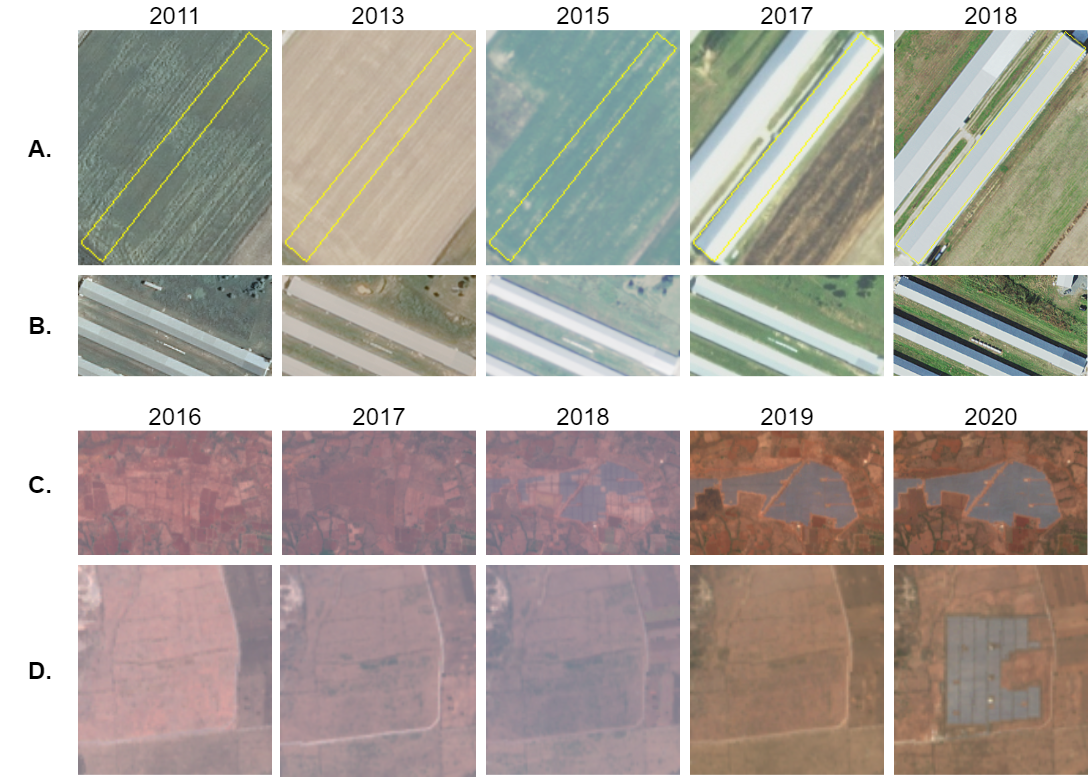Temporal Cluster Matching for Change Detection of Structures from Satellite Imagery
Longitudinal studies are vital to understanding dynamic changes of the planet, but labels (e.g., buildings, facilities, roads) are often available only for a single point in time. We propose a general model, Temporal Cluster Matching (TCM), for detecting building changes in time series of remotely sensed imagery when footprint labels are observed only once. The intuition behind the model is that the relationship between spectral values inside and outside of building's footprint will change when a building is constructed (or demolished). For instance, in rural settings, the pre-construction area may look similar to the surrounding environment until the building is constructed. Similarly, in urban settings, the pre-construction areas will look different from the surrounding environment until construction. We further propose a heuristic method for selecting the parameters of our model which allows it to be applied in novel settings without requiring data labeling efforts (to fit the parameters). We apply our model over a dataset of poultry barns from 2016/2017 high-resolution aerial imagery in the Delmarva Peninsula and a dataset of solar farms from a 2020 mosaic of Sentinel 2 imagery in India. Our results show that our model performs as well when fit using the proposed heuristic as it does when fit with labeled data, and further, that supervised versions of our model perform the best among all the baselines we test against. Finally, we show that our proposed approach can act as an effective data augmentation strategy -- it enables researchers to augment existing structure footprint labels along the time dimension and thus use imagery from multiple points in time to train deep learning models. We show that this improves the spatial generalization of such models when evaluated on the same change detection task.
PDF Abstract


